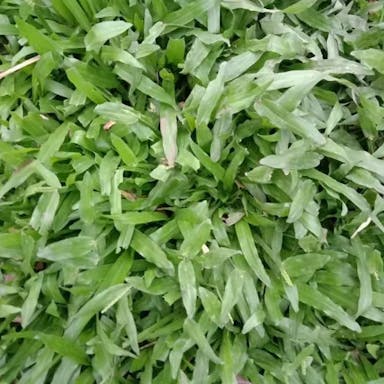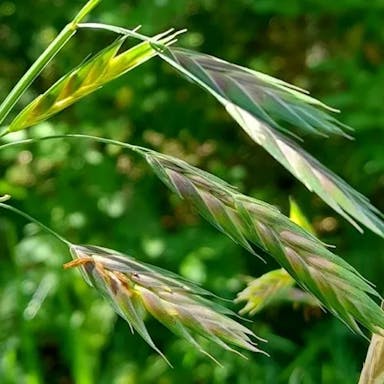Muskingum sedge, known scientifically as Carex muskingumensis, North America native perennial plant. Characterized clumping habit arching, grass-like foliage reach up 3 feet height. Inconspicuous green flowers late spring early summer, followed brown seed heads. Commonly found wetlands, along stream banks, moist woodlands. Foliage turns golden brown fall, adding ornamental value gardens. Relatively easy grow, thriving moist wet soil conditions partial shade. Used landscaping attractive foliage ability tolerate wet areas. Different varieties are available, offering variations in height and foliage color.
Muskingum sedge
- Scientific name
- Carex muskingumensis
Basic Information
- Cyperaceae Family Carex Genus Muskingum sedge Species
- Cyperaceae > Carex > Carex muskingumensis
- 75%
- The Completeness of This Encyclopedia
Please help us complete the encyclopedia, Terrarium is a encyclopedia service to be completed with everyone in the world. Currently, this page is 75% complete. For more information on how to contribute, please click here.
- Graminoid
- Perennial
- Height
- 60cm ~ 90cm
- Flower Color
- Leaf Color
- Anthesis
- summer
- Sunlight Exposure
Full Sun Long hours of sunlight from morning to afternoon Partial Shade A location in the shade of a tree or where either the morning or afternoon is shaded Full Shade A place where there is no direct sunlight
- Partial Shade
- Hardiness Zones
This is an indicator to know to which zone each plant can winter. Knowing the zone of each plant gives you an idea of the cold temperature resistance when grown in the ground without a roof. 2: -42.7 to -40.0 3: -39.9 to -34.4 4: -34.3 to -28.9 5: -28.8 to -23.3 6: -23.2 to -17.8 7: -17.7 to -12.2 8: -12.1 to -6.7 9: -6.6 to -1.1 10: -1.0 to 4.4 11: 4.5 to 10.0
- 5
- Cold resistance
- Good
- Heat resistance
- Good
- Habitat of origin
- United States
- Growth Rate
- Normal
What is Muskingum sedge (Carex muskingumensis)?
What is Muskingum sedge (Carex muskingumensis)
Flower meaning
The flower language commonly used in America for Muskingum sedge is: - Endurance - Resilience - Perseverance One typical example is
Calendar of Muskingum sedge (Carex muskingumensis)
Calendar
Muskingum sedge typically blooms in the late spring to early summer in the United States. The flowers of this plant come at their best during the months of May and June. Blooming starts when a year during this time. The blooming date of the plant often stays for about 2 to 3 weeks. To make the flowers of Muskingum sedge bloom more, ensure the plant gets adequate sunlight, water, and nutrients. Holding right soil wetness levels and avoiding over-fertilization can also assist lengthen the blooming date. It is main to supply well-draining soil for best growth and flowering of Muskingum sedge.
How to grow Muskingum sedge (Carex muskingumensis)
Watering
For Muskingum sedge, irrigation should be moderate. Typically wet the soil once weekly during growth. The plant enjoys moist earth; keep the topsoil damp but not oversaturated. During dormancy, water less frequently, about once every two weeks, to prevent decay. Vary water amounts as needed; give more in hot and arid times, less when cooler and wet. Check soil wetness to preserve the appropriate level for robust growth.
Soil and Fertilizer
Muskingum sedge thrives in moist, well-drained soils with a pH range of 5.5 to 7.5. It benefits from a rich, organic soil that is high in nutrients. Boost healthy growth by applying fertilizer in early spring with a balanced slow-release fertilizer. Fertilize at a rate based on the square footage of soil. Repeat the application later if necessary. However, over-fertilizing can cause problems. Regularly check the soil and modify the schedule.
Sunlight and Place
Muskingum sedge thrives in partial to full sun exposure, requiring at least 4 to 6 hours of direct sunlight daily. It exhibits moderate cold tolerance, surviving in USDA hardiness zones 4-9. During hot summers, it benefits from some shade to prevent scorching. Muskingum sedge prefers temperatures ranging from 60 to 80°F (15 to 27°C) but can tolerate occasional extremes. In winter, it can withstand frost but may benefit from mulching for added protection. Placing it in well-draining soil is crucial for its health. Muskingum sedge shows resilience in various light intensities, but its growth rate may be optimal with 6 to 8 hours of sunlight per day.
Advanced Information of Muskingum sedge (Carex muskingumensis)
Pruning
NO DATA
Planting and Harvest
Muskingum sedge thrives finest when potted rather planting in-ground. To container this plant, select a pot with drainage holes filling it with a well-draining soil mix. Planting the sedge at the same deepness it was before growing, ensuring the roots are spread out fully. Water the greenery thoroughly after planting and placing it in a location with some shade. Repot the plant every 2-3 springs to refresh the dirt and provide additional space for growing. When repotting, gently loosening the roots and placing the greenery in a slightly bigger container. Misting the greenery occasionally to keeping humidity heights, and avoiding overwatering to prevent root rotting. Checking regularly for bugs and illnesses, treating them fast to ensure the sedge's health.
Propagation
Muskingum sedge can be propagated through division or seed sowing. Spacing is easiest in late winter or autumn by separating bunches and replanting them. Seeds could be placed in a well-draining soil blend in early spring or fall. To spread through cuttings, get stem cuttings in spring or summer and anchor them in a damp medium. Leaf cuttings could also be utilized by taking healthy leaves, situating them in a soil blend, and keeping them moist until roots arise. To guarantee effective propagation, it is recommended to combine techniques to expand the odds of accomplishment.
Pests and Diseases
Muskingum sedge is vulnerable to various insects and pathogens, including plant lice, leaf problems, and oxidation. These troubles can weaken the organism, resulting in stunted evolution and yellowing of sheets. Plant lice are diminutive insects that feed on factory juice, prompting distortion of sheets and the extension of viruses. Leaf problem is a fungous affliction that shows itself as gloomy stains on sheets, eventually guiding to sheet descent. Oxidation is another fungous affliction that becomes visible as orange powdery stains on sheets and stems. To forbid these problems, it is fundamental to sustain respectable air circulation around the organism, evade overhead irrigating, and eliminate any corrupted organism material instantaneously. Additionally, applying fungicides or insecticidal cleansers can assist control these insects and diseases. The withering of this plant can be credited to the damage instigated by these insects and diseases, finally touching the plant's overall health and form.
Habitat of Muskingum sedge (Carex muskingumensis)
Habitat
Toxicity of Muskingum sedge (Carex muskingumensis)
Health Benefits
- edible
- Inedible
- Toxic
- No toxicity
NO DATA
Toxic for dogs and cats
NO DATA
Q&A of Muskingum sedge (Carex muskingumensis)
- Where can I purchase Muskingum sedge plants for my wetland or riparian restoration project?
Muskingum sedge plants, scientifically known as Carex muskingumensis, are available from some online plant nurseries focusing on native and wetland plants. Specialized websites provide these sedges. Also, local garden stores and nurseries might stock this sedge, particularly if they concentrate on native plants or wetland restoration. Calling them directly would confirm availability. When obtaining plants for restoration work, verifying responsible sourcing is vital to prevent introducing non-native or invasive species into the project site.
0
0











